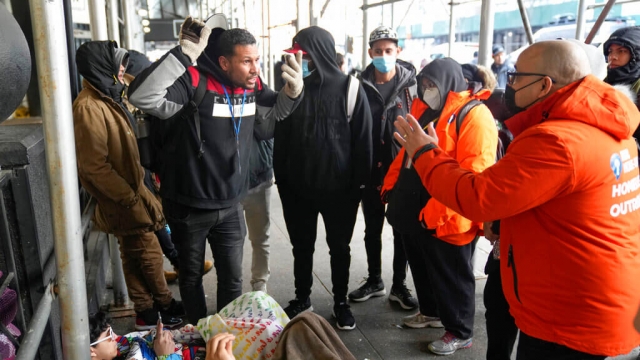With national attention on immigration, "sanctuary cities" are in the spotlight.
"We've been involved, and they have aided, the process of bussing these migrants from tiny little border towns like Del Rio and Eagle Pass up to cities like Chicago, New York, and around the country," said Texas Governor Greg Abbott.
Some cities, like New York and Chicago, are providing housing for tens of thousands of migrants.
But with resources running thin, the cities have been diverting some buses to the suburbs, a move that's now pitting counties against each other.
"Rockland is not gonna stand idly by while your administration, which boasts itself as a sanctuary city, diverts busloads of undocumented individuals to our county," said Ed Day, a Rockland County executive.
Berkeley, California, became the country's first sanctuary city in 1971.
The resolution was passed to protect sailors resisting the Vietnam War.
But the term became connected with immigration in the 1980s, as migrants from Guatemala and El Salvador made their way to the U.S. as the countries were embroiled in a civil war.
But despite this, refugees were refused asylum by the federal government.
In response, a network of religious organizations launched a sanctuary movement, providing food and legal aid.
Local governments followed. Twenty cities and two states became the first to embrace "non-cooperation" with immigration services.
SEE MORE: Chicago church helping migrants in need of shelter, food, community
There isn't an exact definition of what that looks like in practice.
It can range from local authorities refusing to further investigate a person's immigration status to refusing to detain someone without a warrant or local court order.
The Trump administration tried to sue California over its sanctuary laws.
"The state of California's attempts to nullify federal law have sparked a rebellion of patriotic citizens who want their families protected and their borders secured," said former President Donald Trump.
But California won in district court.
The ruling was based on the constitutional doctrine that the federal government can't issue commands directly to states.
In recent years, that doctrine has been co-opted for other political causes besides immigration.
For example, a number of small towns and cities have banned abortion on their own and declared themselves "sanctuary cities for the unborn."
Some localities have also declared themselves sanctuaries for LGBTQ communities by refusing to prosecute gender-affirming care.
Sanctuary cities have become a stage for local lawmakers across state lines to battle over immigration.
But beneath the political spectacle, they pose complicated questions about how localities protect their constitutional authority.
And at the center of it all, tens of thousands of refugees are loaded onto bus after bus, unsure if any city they're sent to next will really bring them the sanctuary they seek.
Trending stories at Scrippsnews.com




